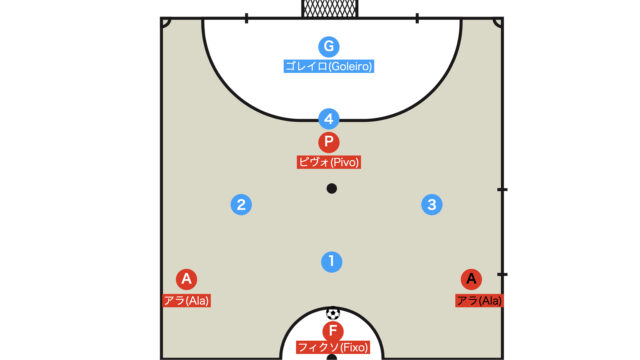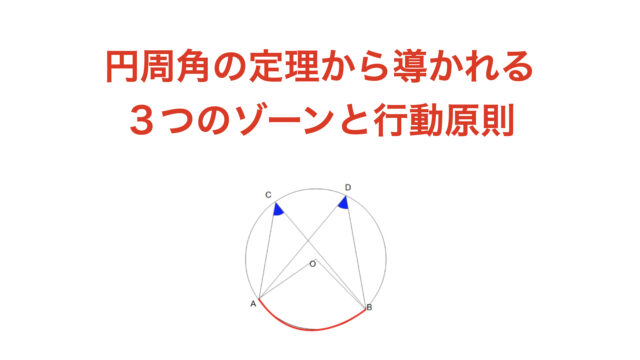Anyone who plays futsal has heard the terms “block” and “curtain”.
You might have a general idea of what they are, but can you clearly distinguish between them?
For those who do understand, it may be an eye-opener; however, it seems that surprisingly few can explain the difference perfectly.
This article thoroughly explains the differences between block and curtain, as well as their tactical intentions.
The Difference between Block and Curtain
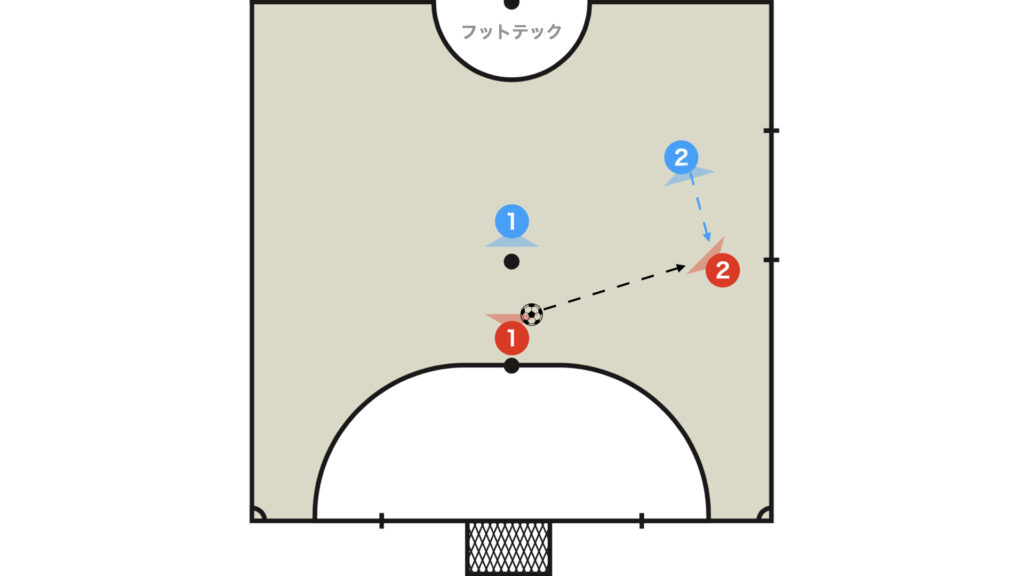
We will explain the differences by imagining a situation where the ball is played from fixo to ala, as shown above.
Curtain (Cortina)
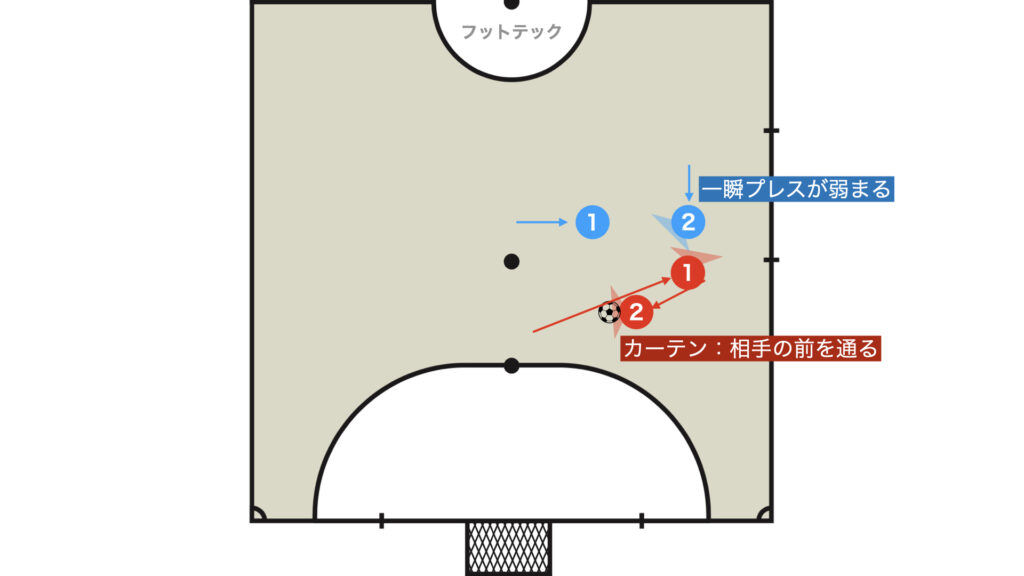
Curtain refers to a play where the player moves in front of the opponent.
It temporarily eases the opponent’s press, providing support to the ball holder.
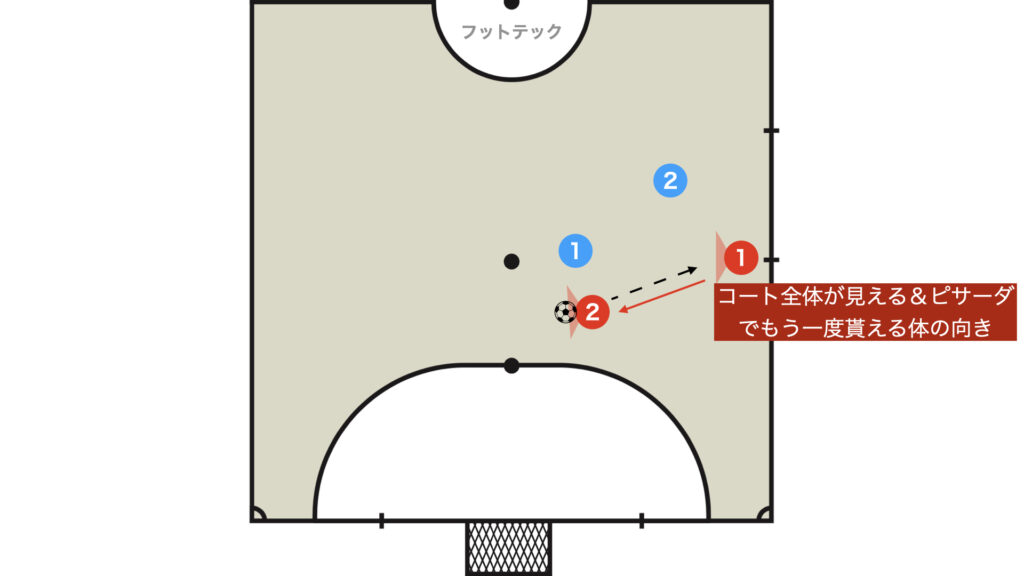
After executing a curtain, it is crucial to quickly rotate your body into a position that provides a full view of the court.
This allows you to receive the ball once again with a pisada (heel).
Conversely, if you fail to adjust your body orientation, you risk losing sight of the ball and being unable to respond to a pisada pass.
Although not commonly used in Japan, the curtain is also known as a cortina.
Block (Screen)

Block refers to a play where a player positions themselves in the path of an opposing defender, effectively becoming an obstacle.
This prevents the opposing defender from effectively pressing the ball holder, thus supporting them much like a curtain does.
Just like with a curtain, after executing a block, it is essential to quickly rotate your body into a position that enables you to receive the ball again with a pisada.
When blocking head-on, the best practice is to cross your arms to absorb the opponent’s momentum (speed).
Additionally, although there is a risk of being bypassed by the opposing defender, by blocking with your back to them and sticking your buttocks out, you can prevent collisions involving the face.
Since it also maintains a body position that allows you to receive the ball once more, it is highly advisable to focus on this type of block as much as possible.
In basketball, block is referred to as a screen.
Indirect Block and Indirect Curtain
Indirect Curtain
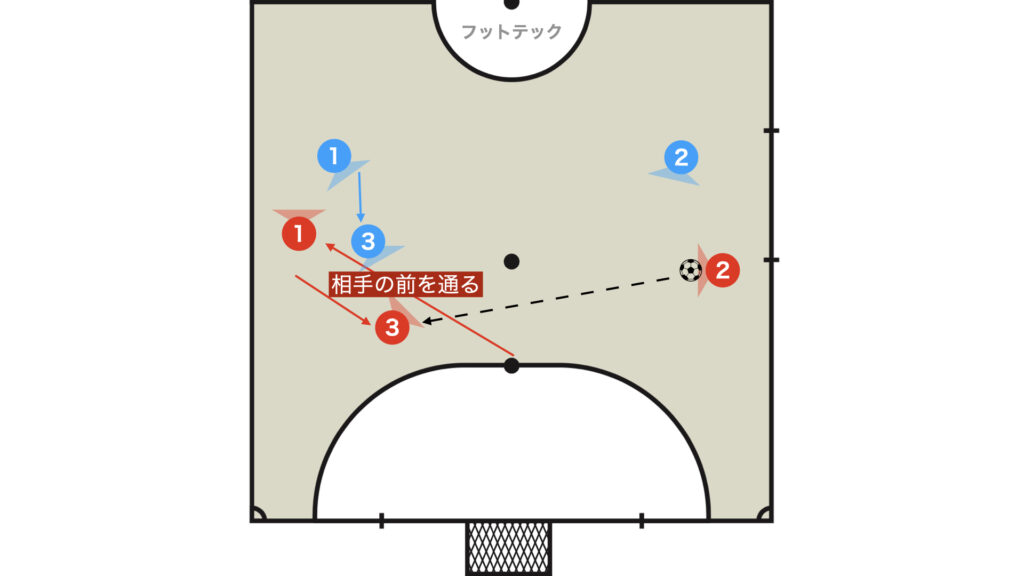
Indirect curtain refers to an action in which a non-ball holder moves between a non-ball holder who is about to receive the ball and their marker, thereby supporting the teammate’s trap.
If a curtain that supports a non-ball holder is called an indirect curtain, then one that supports the ball holder could be referred to as a direct curtain (though hardly anyone actually uses that term).
Indirect Block

Indirect block refers to an action where you block the marker of a non-ball holder, similar to the indirect curtain.
If a block that supports a non-ball holder is called an indirect block, then one that supports the ball holder could be referred to as a direct block.(Though hardly anyone actually uses that term.)
Summary
Even if one understands the differences between block and curtain, very few are able to be aware of their body orientation.
Simply being conscious of this can make you a standout player in competitive futsal.
Be sure to incorporate this into your regular training.
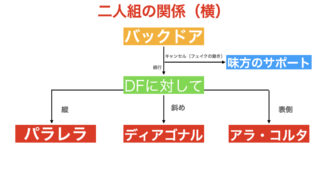
Thank you very much for reading this article to the end.
If you found this article useful, please consider sharing it using the social media share buttons above.
We regularly share valuable insights on futsal tactics on Twitter, so if you haven’t followed us yet, we’d appreciate your support!
We are committed to raising the level of futsal in Japan by sharing high-quality information through discussions with individuals who have coaching experience in the F.League and overseas.
If you have any questions or notice any mistakes, feel free to leave a comment below.
We update our articles regularly, so if you’d like to keep reading, please bookmark our site or search for “FutTech”!
